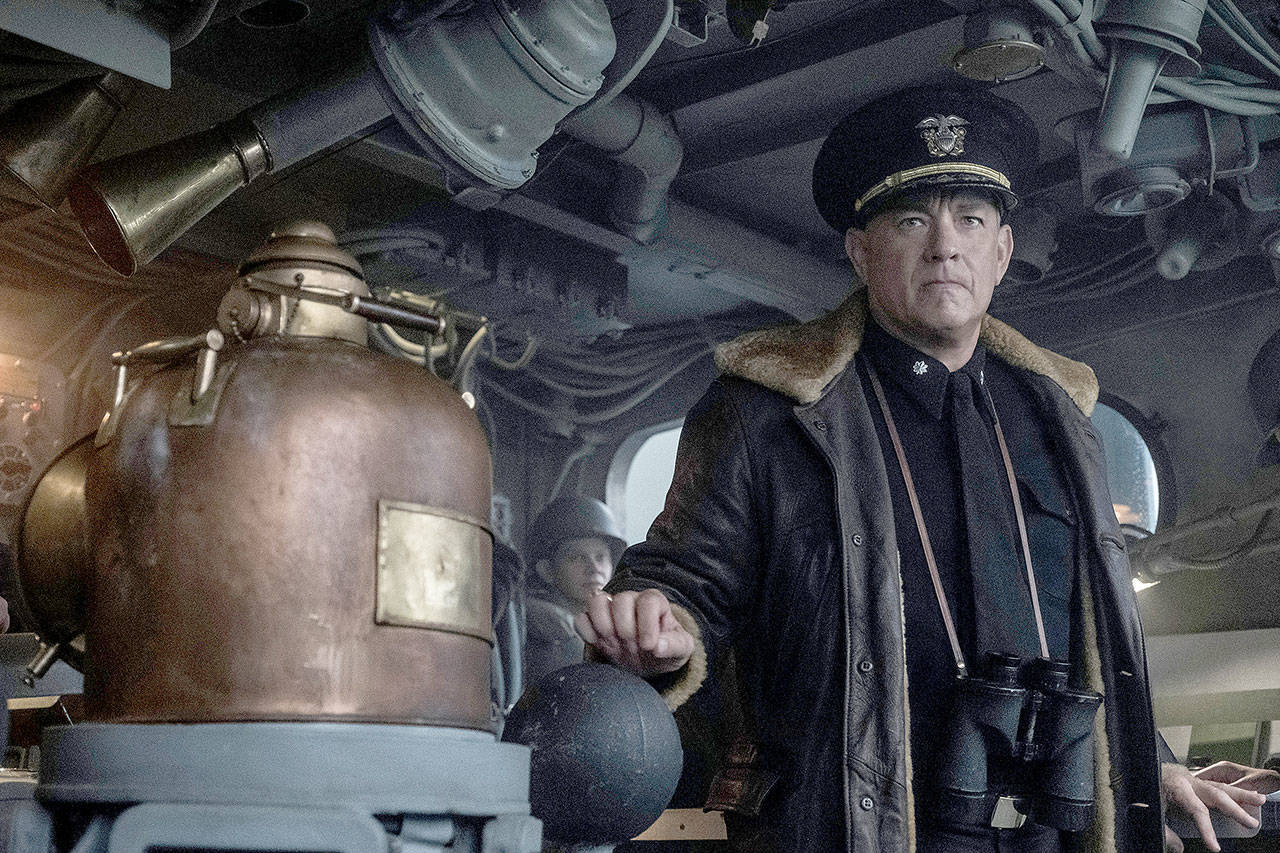By Michael Phillips / Chicago Tribune
I can’t say how “Greyhound” might look and feel on a big movie screen, because it’s premiering Friday on Apple TV Plus, a pandemic change of plans described in one recent interview as “absolutely heartbreaking” by the screenwriter and star, Tom Hanks.
But honestly, it’s a pretty good fit for home viewing. Clocking in at under 90 minutes, not counting the credits, the drama comes by its name honestly. Like the canine, it’s trim, narrow of scope, and it runs efficiently.
“Greyhound” tells its fictional story head-on, no structural messing around, compared to Christopher Nolan’s similarly compact but infinitely more ambitious “Dunkirk.” Hanks has nursed this project for years. He adapted the 1955 novel “The Good Shepherd” by C.S. Forester, best known for his “Horatio Hornblower” adventures and “The African Queen.”
The “Greyhound” script remains faithful to certain aspects of the novel, notably the protagonist’s devout Christian beliefs and practices. Hanks’ script stays tightly focused on his character, first-time U.S. Navy Capt. Ernie Krause, a convoy task force commander leading 37 supply ships across the Atlantic, to Britain, in 1942. It’s a fraught 48-hour timeline. The Nazi U-boats travel in “Grey Wolf” packs, presenting Krause and his crew with terrifying strategic challenges. How, for example, does a destroyer elude two or more torpedoes speeding toward their target at the same time?
As depicted in “Greyhound,” it’s a tense and effective sequence, and the movie has little time for down-time between crises. Hanks’ flashback framing device is a brief scene featuring Elisabeth Shue as the devoted love of Krause’s life. He thinks of her often, out on the ocean, months later, grappling with one life-or-death scenario after another.
If this sounds cliched, it’s hardly Shue’s fault; she does every simple, clear, telling thing as an actor to ground the flashbacks in something more substantial than honey. At its sharpest “Greyhound” uses its preferred “Law & Order” pacing and frequent fade-outs and fade-ups between scenes to roll forward, while the actors keep the one-to-one interactions as honest as possible. Stephen Graham (as Charlie Cole) and Rob Morgan (barely verbal but nonetheless excellent as the ship’s cook, Cleveland) add crucial, tight-lipped support.
Director Schneider, who hasn’t made a feature since the undervalued 2009 charmer “Get Low,” filmed “Greyhound” in Baton Rouge, using the USS Kidd Naval destroyer for much of the footage. Extensive digital effects came later. The medium-budget picture goes understandably heavy on the digital effects and God’s eye-view perspective, including flourishes such as director Schneider’s swoop up above sea level to the northern lights above the clouds.
Hanks’ conception of Krause as a deeply principled man of action, who makes a serious tactical mistake in the first 15 minutes of the story and must earn back his crew’s trust because of it, has its moments of piety (a matter of textual emphasis, not actorly indulgence). There are other moments in “Greyhound” belonging to a lesser grade of WWII drama; the voice actor playing the U-boat commander heard via sniveling radio transmission sounds like pure 1942 Hollywood Nazi.
Well. It’s a movie, after all, not a 91-minute History Channel re-creation. Thanks to Hanks, Scheider and company, it’s a satisfying one.
“Greyhound” (3 stars)
A labor of love for star Tom Hanks, who plays a World War II Navy captain leading 37 supply ships across the Atlantic in 1942, as German U-boats lurk below. Hanks is solid as always as a deeply principled man of action. Based on a 1955 novel by C.S. Forester.
Rated: PG-13, for war action and violence, and brief strong language.
Streaming: Starting Friday on Apple TV+.
Talk to us
> Give us your news tips.
> Send us a letter to the editor.
> More Herald contact information.

























